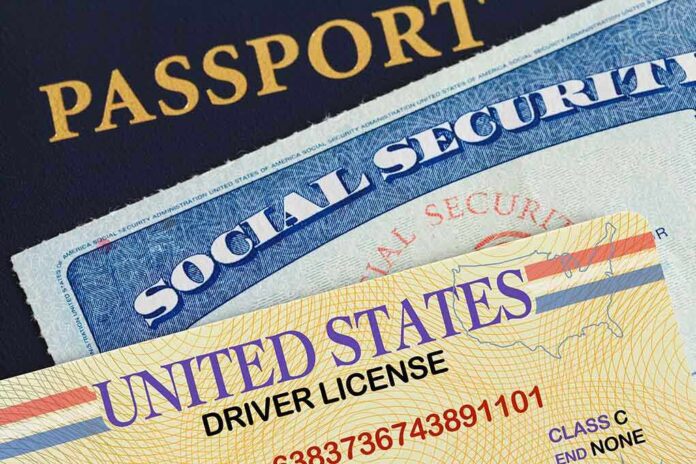Now that May 7 has come, travelers across the U.S. grapple with new TSA guidelines that may affect their air travel plans.
Quick Takes
- Starting May 7, 2025, travelers must present a REAL ID or equivalent for domestic flights.
- REAL ID aims to bolster security by making IDs harder to forge, rooted in post-9/11 reforms.
- Non-compliant travelers will undergo additional screening but can still fly.
- States are now issuing REAL ID-compliant cards, distinguishable by a star.
REAL ID Requirements and Compliance
From May 7, 2025, all travelers over the age of 18 in the U.S. need a REAL ID, U.S. passport, or other acceptable forms of identification to board domestic flights. Originally driven by the 9/11 Commission’s recommendations, the REAL ID Act of 2005 set a unified security standard to enhance the integrity of IDs, thwarting forgery and enhancing national security. Each compliant ID is identifiable by a star in the upper-right corner, indicating it meets federal standards.
Acquiring a REAL ID involves visiting the DMV with documents verifying identity, address, and lawful status. While U.S. territories and states currently issue these cards, temporary or limited licenses cannot serve as substitutes. Enhanced IDs from specific states such as Michigan and New York also qualify under REAL ID guidelines.
Standby for videos of people losing their minds when they discover they can’t fly with their old ID? https://t.co/R7rKRoPxtm
— Mike Vielhaber (@MVielhaber) May 7, 2025
Impact on Travelers and Airport Operations
The introduction of REAL ID is expected to cause extended wait times at airport security checkpoints. TSA advises passengers without REAL ID or equivalent documents to arrive three hours before their flight to accommodate potential additional screenings. Despite the expected inconveniences, TSA officials emphasize continued efforts to minimize disruptions while ensuring passengers can proceed with their travel.
“You will still get through the checkpoint. You’ll be okay. You may face some additional screening measures, and that’s why we’re really underscoring to folks to please go to the airport early,” said Acting TSA Administrator Adam Stahl.
A valid REAL ID will streamline the verification process and contribute to a safer travel environment. As TSA remains committed to these principles, travelers can be reassured about the protection of privacy and the absence of a national database compilation.
#ICYMI – #RealID Required to Fly ✈️per Transportation Security Administration (#TSA) to Enforce the #RealID Requirement for Domestic Flights is #May7th, 2025.👇 https://t.co/zg5yvrMMA0
— PeopleSearches.com 🇺🇸 | Missing Persons Search (@peoplesearches) November 25, 2024
Addressing Public Concerns
Despite the benefits, the REAL ID rollout faces scrutiny over privacy concerns, with some fearing it could lead to heightened government surveillance. However, TSA Administrator Adam Stahl clarifies that the agency’s focus is solely on enhancing travel safety without creating a federal driver license database. This focus reflects the Act’s purpose to improve ID security while balancing civil liberties.
“The notion that we are creating some sort of national surveillance system is not true, it’s not correct,” Stahl also said.
By enhancing identity verification, REAL ID aims to improve air security standards effectively. Travelers are advised to prepare ahead of time for the new requirement, thereby avoiding possible delays and ensuring a smooth transition. Ensuring compliance relies on both state efforts in issuing proper IDs and individuals obtaining them promptly.
Sources:
- https://www.bbc.com/travel/article/20250505-real-id-the-big-change-affecting-us-air-travel
- https://www.cbsnews.com/news/real-id-flying-airport-what-to-know/
- https://www.dhs.gov/real-id/real-id-faqs
- https://www.foxnews.com/politics/top-tsa-official-explains-what-do-you-do-not-have-real-id











